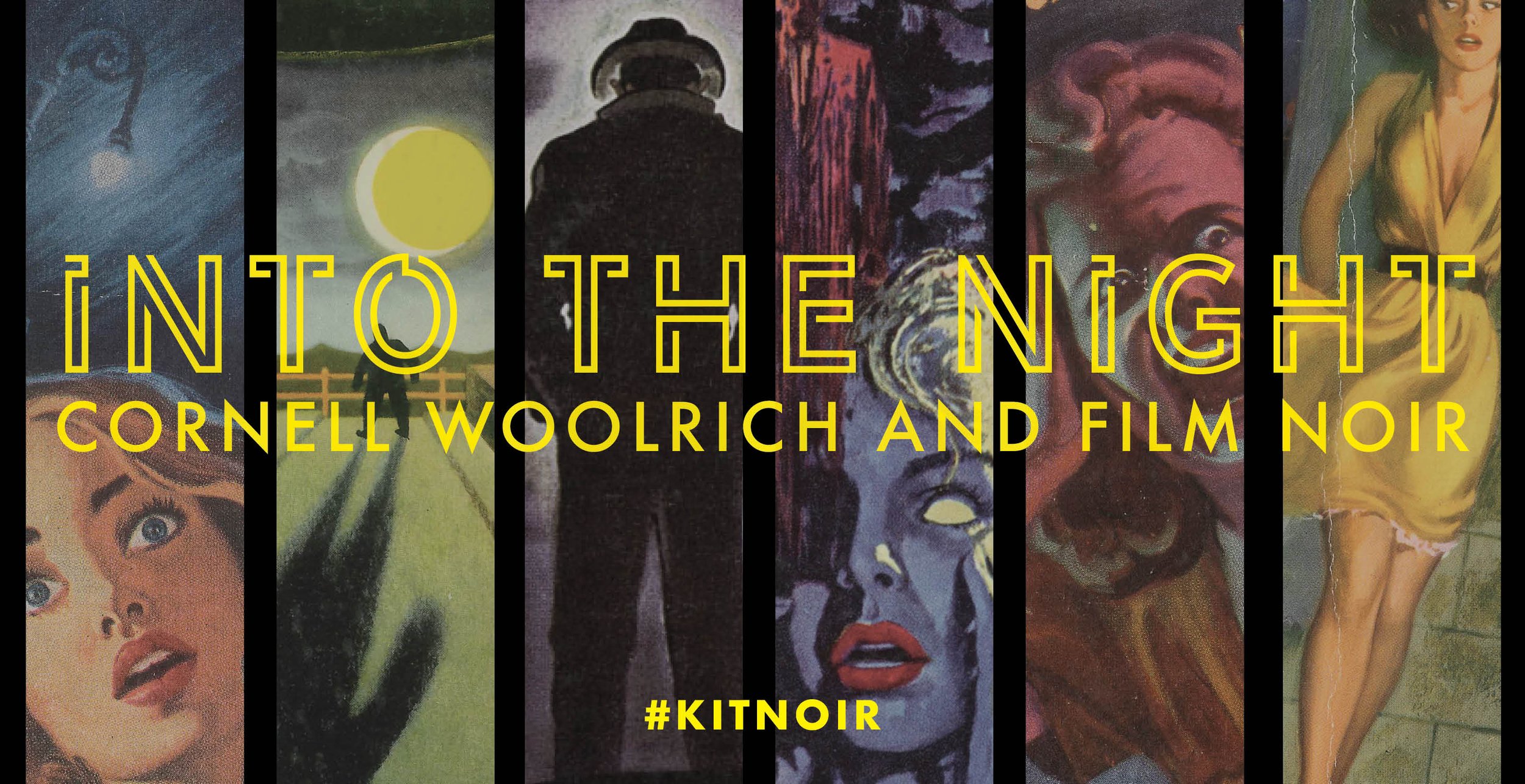Deadline at Dawn (7:30 pm)
1946 / 83 min / b/w
Dir. Harold Clurman / Scr. Clifford Odets
Cast: Susan Hayward, Bill Williams, Paul Lukas
Adapted from Deadline at Dawn (1944)
Digital copy courtesy of Swank
This screening is part of The Second Annual Dr. Saul and Dorothy Kit Film Noir Festival
Into the Night: Cornell Woolrich and Film Noir
“This is New York,” a character snaps early in Deadline at Dawn, “Where hello means goodbye.”
The city is a sinister force in this acid-tongued noir from playwright Clifford Odets (Sweet Smell of Success, 1957). A key inspiration for the protagonist in the Coen Brothers’ 1991 Barton Fink (which lifts a plot point from Deadline at Dawn), Odets does a dramatic rework here of Woolrich’s then-popular novel. The basic structure is intact: A couple must race to prove a man’s innocence before sunrise. From there, Odets imbues the work with his trademark banter and adds an amnesia plot structure very much in line with Woolrich’s own “And So to Death” or The Black Curtain (both 1941). The result is a prime example of the one-crazy-night-in-New-York movie (think After Hours, Eyes Wide Shut, or Good Time).
A “motion-picture guessing game of superior quality” (New York Herald Tribune), Deadline at Dawn benefits from its formidable talent behind the camera. In addition to Odets there’s cinematographer Nicholas Musuraca (The Magnificent Ambersons, Out of the Past), who bathes this nocturnal picture in inky low-key lighting, and director Harold Clurman, a founder of the influential Group Theatre, who here makes his sole feature film. Together they create a “racy little baffler” (New York Times) that captures both the allure and the terror of a great American city at night.
Still from Nightmare. Image courtesy of Park Circus/MGM Studios
Nightmare (9:20pm)
1956 / 89 min / b/w
Dir. and scr. Maxwell Shane
Cast: Kevin McCarthy, Edward G. Robinson, Connie Russell
Adapted from the short story “And So to Death,” Argosy, March 1, 1941
35mm print courtesy of Park Circus
Written and directed by Maxwell Shane, Nightmare is in fact a remake of Shane’s own 1947 Fear in the Night. Both films are based on Woolrich’s 1941 novelette “And So to Death” (better known as “Nightmare”), whose plot is quite similar to the 1940 short story “C-Jag” (which in turn was the source for Monogram’s 1947 Fall Guy).
What led Shane to remake his own movie? His original Fear in the Night had been produced by the B-picture team of William Pine and William Thomas (aka the “Dollar Bills”), who had been responsible for dozens of low-budget pictures for Paramount between 1941 and 1955. Following Pine’s death in 1955, Thomas and Shane joined forces with Pine’s son to reconstitute the company as Pine-Thomas-Shane, now with a distribution deal through United Artists. It was in this context that the team chose to remake Fear in the Night as the new company’s debut release.
The resulting film is an impressive example of noir’s late mannerist phase. But Nightmare is also a window on the changed circumstances of low-budget filmmaking in the wake of the Supreme Court’s Paramount ruling of 1948. Whereas once the studios had been able to dump low-budget B product on contracted exhibitors, films now had to compete for bookings on an open market. Accordingly, Nightmare significantly raises the production values of the original film by relocating its plot to the New Orleans jazz scene. The higher budget permitted extensive location shooting as well prominent roles for singer Connie Russell and bandleader Billy May, who arranged the swaggering jazz melody that features prominently in the plot.
What didn’t change, fortunately, was the extraordinary opening, which replicates shot-by-shot the start of Shane’s original.



